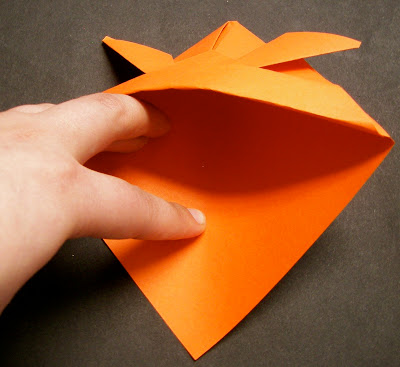While I was working at a summer camp I noticed a lot of campers doing a type of friendship bracelet that I had never seen before. One day it was rainy and cold and most of the outdoor activities had been canceled so I asked one of the campers, Rachael, to teach me how to do it! I found it to be easy, fast, and look really neat! I made countless bracelets, necklaces and anklets that summer.
 As I planned for this unique weaving project for my 4th grades I searched for some printed directions to help my students work through the steps if I was busy helping someone else. I have directions but they are different than how I teach the students - so I don't tend to use them.
As I planned for this unique weaving project for my 4th grades I searched for some printed directions to help my students work through the steps if I was busy helping someone else. I have directions but they are different than how I teach the students - so I don't tend to use them.Once I figured out how I was going to teach how to weave the bracelets I had to organize the use of embroidery floss -- I had a vision of a massive pile of wasted string somehow tangled in a massive ball! To keep my vision from happening I placed out small butter tubs (with lids) - one for each table in each class. I separated the embroidery floss to give each table the same set of colors. When each tub was filled I put the lid on and labeled it with their teacher and their table color. This way if blue table in one class used all their pink string the first day it wouldn't affect anyone else - or if they tangled their orange so badly they couldn't use it - again it wouldn't affect anyone else. When introducing the lesson I explain this to them - that way there is not "HEY WHO TOOK OUR BLACK?! or people coming over to ask to use another table's orange since theirs is tangled.
The day of the lesson I explain to them our plan for the day. I emphasis that some of them will understand this right away because either they have done this type of bracelet, they have done others like it, or maybe they are just good at spacial things like this. There will be other students in class that will feel confused and frustrated for most of class. I ask if that is okay - is it okay to be frustrated and confused?! They say 'yes'. I ask if it's okay to give up -they say no. I explain that I will travel around the room but that I can only help one or maybe two students at a time -- they will need to be patient. I prepare them to understand that they may only start to understand and get it today - but that we will do it again and they will master it before we are done.
Next is to show them how to weave their bracelet. I show them how to measure out 3 pieces of embroidery floss at 2 feet. Then they are to tie ALL the ends together - they should get a loop. Tape it to the table and separate the loops. Make bear claw hands with fingers pointed towards the table. On one hand put a string on the middle finger and another string on the pointer finger - on the opposite hand put the string on the middle finger. Take the string-less pointer finger and go over, under, over the strings on the opposite hand - grab the very outside string and pull through. So the string on the middle finger will transfer to the weaving pointer finger. Then move the string from the pointer finger to the middle finger and repeat to the opposite hand. Repeat until the loops are too small for fingers.
 The next class up the difficulty and I let the students pick from 3-7 strings. I show them how to weave with 7 strings -- it's the same process just with more strings. If students are still uneasy with everything they can stay with 3 strings!
The next class up the difficulty and I let the students pick from 3-7 strings. I show them how to weave with 7 strings -- it's the same process just with more strings. If students are still uneasy with everything they can stay with 3 strings!The first day of this project is a little rough since there is only one of me -but the students handle it well and there are generally enough students that catch on fast enough that they can help their peers.
After the first day they ask/beg to make friendship bracelets at every class!











































